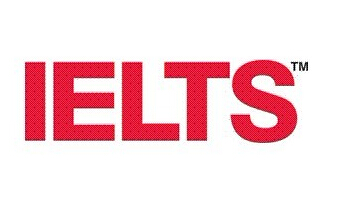雅思阅读真题文章之生物防治病虫害
2013-08-02 15:15 供稿单位: 新航道
出国英语考试有哪些 雅思6.5是什么水平 雅思阅读评分标准 托福阅读评分标准 雅思和托福的区别
Biological Pest Control
A. Biological control is, generally, human’s use of a specially chosen living organism to control a particular pest. This chosen organism might be a predator, parasite, or disease which will attack the harmful insect. It is a form of manipulating nature to increase a desired effect. A complete Biological Control program may range from choosing a pesticide which will be least harmful to beneficial insects, to raising and releasing one insect to have it attack another, almost like a “living insecticide”.
B. Biological control methods can be used as part of an overall Integrated Pest Management (IPM) program to reduce the legal, environmental, and public safety hazards of chemicals. In addition, it may be a more economical alternative to some insecticides. Some biological control measures can actually prevent economic damage to agricultural crops. Unlike most insecticides, biological controls are often very specific for a particular pest. Other helpful insects, animals, or people can go completely unaffected or disturbed by their use. There is less danger of impact on the environment and water quality.
C. Biological control takes more intensive management and planning. It can take more time, require more record keeping, more patience, and sometimes more education or training. Successful use of biological control requires a greater understanding of the biology of both the pest and its enemies. Many natural enemies are very susceptible to pesticides, and using them successfully in an IPM program takes great care. In some cases, biological control may be more costly than pesticides. Often, the results of using biological control are not as dramatic or quick as the results of pesticide use. Most natural enemies attack only specific types of insects — unlike broad-spectrum insecticides, which may kill a wide range of insects. Though often an advantage, this can also be a disadvantage.
D. Biological control uses naturally occurring predators, parasites and diseases to control pests. There are three main ways to use these natural enemies against unwanted insect pest populations. Classical Biological Control (importation) involves traveling to the country or area from which a newly introduced pest originated and returning with some of the natural enemies that attacked it and kept it from being a pest there. New pests are constantly arriving accidentally or intentionally. Sometimes they survive. When they come, their enemies are left behind. If they become a pest, introducing some of their natural enemies can be an important way to reduce the amount of harm they can do. Augmentation is a method of increasing the population of a natural enemy which attacks a pest. This can be done by mass producing a pest in a laboratory and releasing it into the field at the proper time. Another method of augmentation is breeding a better natural enemy which can attack or find its prey more effectively. Mass rearings can be released at special times when the pest is most susceptible and natural enemies are not yet present, or they can be released in such large numbers that few pests go untouched by their enemies. The augmentation method relies upon continual human management and does not provide a permanent solution unlike the importation or conservation approaches may. Conservation of natural enemies is an important part in any biological control effort. This involves identifying any factors that limit the effectiveness of a particular natural enemy and changing them to help the beneficial species. Conservation of natural enemies involves either reducing factors which interfere with the natural enemies or providing needed resources that help natural enemies.
E. In addition to the introduction of predators, several microbial pathogens are effective against nematodes. They consist of a microorganism (e.g. a bacterium, fungus, virus or protozoan) as the active ingredient. They can control many different kinds of pests, although each separate active ingredient is relatively specific for its target pest (s). For example, there are fungi that control certain weeds, and other fungi that kill specific insects. The most widely used microbial pesticides are subspecies and strains of Bacillus thuringiensis, or BT. Each strain of this bacterium produces a different mix of proteins, and specifically kills one or a few related species of insect larvae. While some BT’s control moth larvae found on plants, other BT’s are specific for larvae of flies and mosquitoes. The target insect species are determined by whether the particular BT produces a protein that can bind to a larval gut receptor, thereby causing the insect larvae to starve.

- 新航道,英语成功之道。时间获取新航道英语学习资料和新鲜资讯,请在微信公众账号中搜索「新航道英语」或者「xhdenglish」,或用手机扫描左方二维码,即可获得新航道每日精华内容推送和英语学习经验分享,并参与新航道举办的各项活动。
精彩专题
更多视频荟萃
更多
-
新航道姚骏鹏-雅思阅读高分攻略
时长:03-06

-
新航道陈侃侃-雅思口语要有范儿
时长:03-06

-
【3分钟学雅思】王大锤告诉你为啥药不能停
时长:01-12

-
【3分钟学雅思】全世界个感官餐厅
时长:01-12
热门文章
更多
-
8月31日雅思广州考机考初体验
选择机考模式的考生将通过机考模式参加听...








